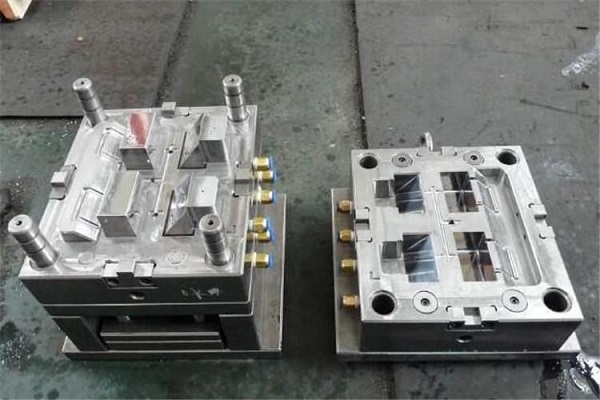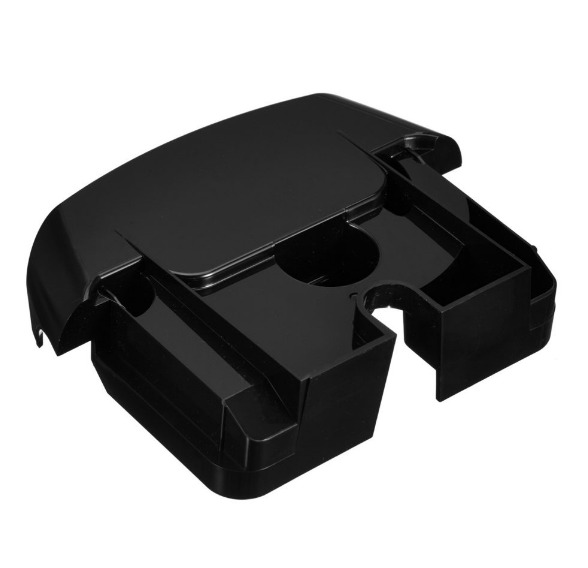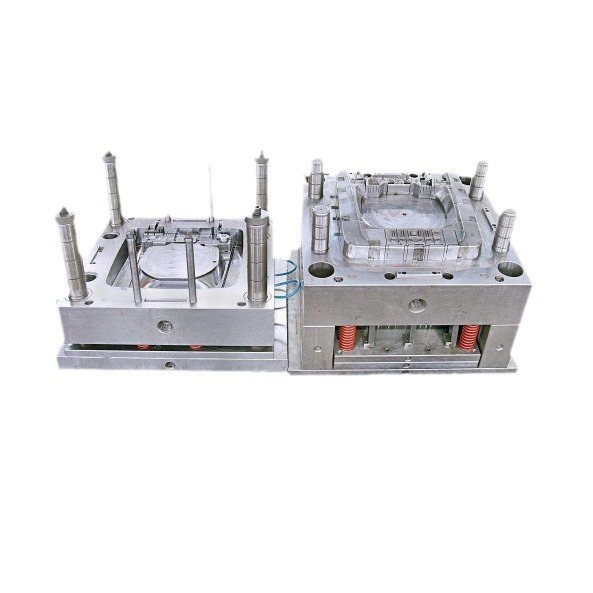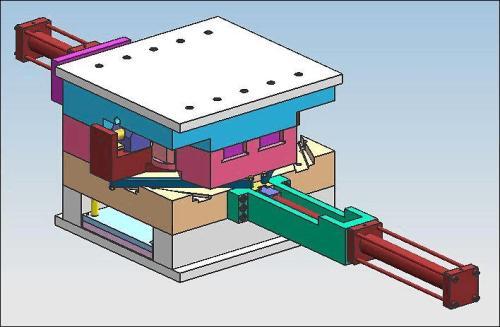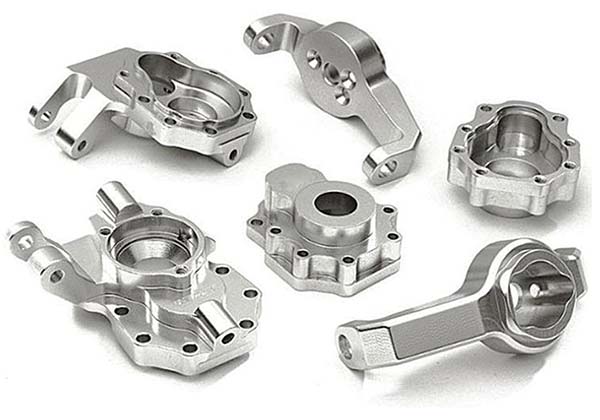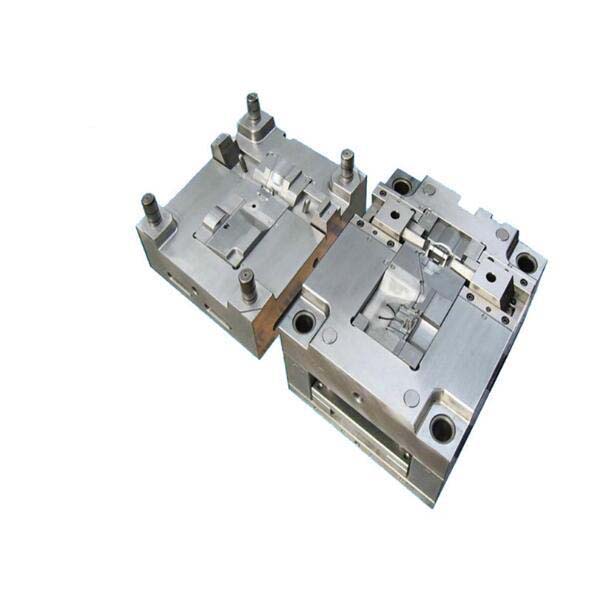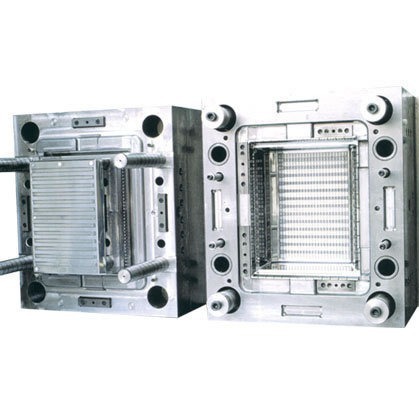In today's manufacturing world, molds are the bridge between digital designs and real, high-quality products. For industries where mistakes can be costly—like car manufacturing, medical equipment, and electronics—the quality of the mold is extremely important. The key process that makes this quality possible is CNC machining. It's the technology that turns raw steel into detailed, long-lasting, and precise tools needed for mass production. This guide goes beyond the basics to explore advanced strategies and complete workflows that define top-quality cnc mould making. We will cover everything from computer design optimization and specialized machining methods to the final finishing steps that ensure perfect part copying. Our goal is to provide useful knowledge that improves precision, efficiency, and quality in your mold-making operations.
Optimizing CAD/CAM Workflows
A successful mold starts long before any cutting begins. The foundation of high-precision cnc mould making lies in a strong and carefully planned CAD/CAM workflow. This digital phase isn't just a starting step—it's where we decide if something can be made, prevent errors before they happen, and perfect the plan for physical creation. Failing to optimize this stage always leads to problems later, including machining mistakes, longer production times, and lower mold quality. We see this digital-to-physical translation as one connected process where each step directly affects the next. A well-organized workflow ensures that the design idea is perfectly translated into machine instructions, guaranteeing predictable and high-quality results.
From Concept to Code
The journey from a 3D model to a finished mold cavity follows a careful, step-by-step path. Each stage has a specific purpose aimed at improving the design for production and creating efficient, error-free machine instructions.
1. Mold Design in CAD (Computer-Aided Design): This is the planning stage where the tool is designed. For mold making, this goes far beyond simple 3D modeling. We focus on building critical mold-specific features directly into the design. This includes defining the parting line, applying precise draft angles to help part removal, separating the model into core and cavity halves, and designing complex cooling channels to manage heat during injection molding. Importantly, we include material-specific shrinkage compensation to ensure the final plastic part meets size specifications. At this point, thorough Design for Manufacturability (DFM) analysis is essential. It allows us to identify and fix features that would be difficult, expensive, or impossible to machine before moving to the CAM phase.
2. Toolpath Generation in CAM (Computer-Aided Manufacturing): Here, the validated 3D CAD model is imported into the CAM environment to be translated into machine instructions, or toolpaths. This is a strategic process, not an automatic one. We select specific cutting strategies based on the mold's shape and material. This typically involves a sequence of operations: high-efficiency roughing to remove bulk material, semi-finishing to refine the shape and step down geometry, and high-precision finishing passes to achieve the final surface. Advanced CAM software provides powerful simulation features, which we use extensively to visualize the entire machining process. This allows us to verify toolpaths, detect potential collisions between the tool, holder, and workpiece, and generate accurate estimates of machining time. The workflow from a neutral file format like a .STEP file in CAD to a verified set of toolpaths in CAM is the critical link ensuring design intent can be manufactured.
3. Post-Processing and Verification: The final digital step is post-processing. The CAM software's generic toolpath data is converted into machine-specific G-code that the CNC controller can understand. Each machine brand (e.g., Haas, Fanuc, Siemens) has its own G-code language, making a properly configured post-processor essential. Before sending the code to the machine, we often use advanced verification software. This software uses a "digital twin" of the physical machine setup to run a final, comprehensive simulation. It provides the ultimate protection against costly crashes and ensures the G-code will produce the part exactly as intended.
Multi-axis CNC Strategies
The complexity of modern products demands molds with equally complex shapes. Features like deep ribs, curved surfaces, and undercuts are often impossible to produce efficiently with traditional 3-axis machining. This is where multi-axis CNC strategies become essential. Understanding when and why to use 3-axis, 3+2, and continuous 5-axis machining is fundamental to balancing cost, time, and quality in cnc mould making. Each approach offers a distinct set of capabilities, and selecting the right one for the job is a hallmark of an experienced mold maker. The goal is to machine the most complex features in the fewest possible setups, as each time a part is re-positioned, the risk of dimensional error increases.
3-Axis Machining
3-axis machining, where the cutting tool moves simultaneously in the X, Y, and Z linear axes, remains the workhorse for a significant portion of mold making. It is highly effective and cost-efficient for molds with relatively simple shapes. This includes parts with open cavities, straight walls, and no undercuts. The programming and setup are straightforward, making it ideal for the initial roughing stages of almost any mold, as well as the complete machining of less complex core and cavity blocks. However, its primary limitation is tool access. To machine features on different faces of a block, the part must be manually rotated and re-positioned for each new orientation. This process is time-consuming and introduces potential for cumulative location errors.
3+2 Axis Machining
Often called positional 5-axis machining, the 3+2 axis approach offers a powerful blend of simplicity and capability. In this strategy, the two rotational axes (A and B) are used to lock the workpiece at a compound angle. The machine then executes a 3-axis cutting program. This is not simultaneous 5-axis movement, but it allows the tool to approach the workpiece from virtually any direction. Its primary benefit is the ability to machine five sides of a mold block in a single setup. This is perfect for drilling angled cooling channels, milling deep pockets without requiring excessively long tools, and creating minor undercuts. By drastically reducing the number of setups, 3+2 machining significantly improves accuracy and cuts overall production time compared to using only 3-axis methods for the same part.
Continuous 5-Axis Machining
Continuous, or simultaneous, 5-axis machining represents the peak of CNC capability for complex mold fabrication. Here, all five axes (X, Y, Z, A, and B) can move at the same time, allowing the tool to follow intricate, continuously changing surface contours. This is essential for manufacturing molds for parts with organic shapes, such as those found in medical implants or aerospace components like turbine blades and blisks. A key advantage is the ability to maintain an optimal cutting position, keeping the tool tangent to the workpiece surface. This allows for the use of shorter, more rigid tools, which minimizes tool deflection and vibration. The result is a vastly superior surface finish that requires significantly less manual polishing, along with the ability to machine extremely complex undercuts and warped surfaces in a single, fluid motion.
| Machining Type | Axis Movement | Best For (Mold Features) | Pros | Cons |
| 3-Axis | Simultaneous X, Y, Z | Open cavities, simple cores, 2.5D features, roughing | Simple to program, fast for basic shapes, cost-effective | Multiple setups for complex parts, limited tool access, potential for setup error |
| 3+2 Axis | 3-axis cutting on a fixed, angled workpiece | Angled holes (cooling lines), deep pockets, features on 5 sides | Single-setup efficiency, improved accuracy, avoids long tools | Cannot machine complex curved surfaces in one pass |
| Continuous 5-Axis | Simultaneous X, Y, Z, A, B | Complex curved surfaces, impellers, undercuts, conformal cooling channels | Superior surface finish, access to all features, use of shorter tools | High machine cost, complex CAM programming, requires skilled operators |
High-Speed Machining
High-Speed Machining (HSM) is a transformative strategy in modern cnc mould making, particularly when working with the hardened tool steels required for durable, long-lasting molds. HSM is not simply about running a spindle at high RPMs; it is a comprehensive approach that pairs high cutting speeds with high feed rates, but uses a shallow axial depth of cut (ADOC) and a small radial depth of cut (RDOC). This "light and fast" approach fundamentally changes the physics of cutting. Instead of brute force, HSM relies on speed to shear the material cleanly. The core principle is to remove heat from the process by forming small, hot chips that are thrown clear of the cutting zone, leaving both the tool and the valuable mold block relatively cool.
Defining HSM
The effectiveness of HSM lies in its specialized toolpaths, which are designed to maintain a constant tool engagement and avoid the sharp corners or slotting motions that cause tool shock in conventional machining. CAM systems generate these paths using algorithms like trochoidal milling, peel milling, and high-speed contouring. Trochoidal milling, for example, uses a circular "looping" motion to clear a channel wider than the tool's diameter, preventing the tool from being buried in a full-width cut. This controlled engagement allows for dramatically higher feed rates and deeper axial cuts than would otherwise be possible. It's a strategy focused on maintaining a consistent, light chip load, which minimizes tool pressure and vibration.
Benefits in Mold Fabrication
The advantages of implementing HSM in a mold shop are significant and directly address key production challenges.
- Machining Hardened Materials: HSM's greatest impact is its ability to efficiently machine tool steels like H13, P20, and S7 after they have been heat-treated to their working hardness (typically 45-65 HRC). Conventionally, molds were machined in a soft state, heat-treated, and then finished with slow, costly grinding or Electrical Discharge Machining (EDM) to correct for heat-treat distortion. HSM allows for hard milling, enabling us to machine the mold to its final dimensions in its stable, hardened state, eliminating an entire stage of the process and its associated inaccuracies.
- Superior Surface Finish: The light radial engagement and high cutting speeds of HSM reduce cutting forces and tool deflection. This results in a much smoother, cleaner surface finish directly off the machine. For many applications, an HSM finish can reduce subsequent manual polishing time by 50-80% or more, a massive saving in skilled labor costs.
- Reduced Lead Times: While the depth of cut is small, the incredibly high feed rates mean that the overall Material Removal Rate (MRR) for finishing and semi-finishing operations is significantly higher than with conventional methods. This drastically shortens machine cycle times and accelerates mold delivery.
| Material | Hardness (HRC) | Cutting Speed (Vc) | Feed per Tooth (fz) | Machining Notes |
| P20 Tool Steel | ~32 HRC | 200-400 m/min | 0.1-0.3 mm | Pre-hardened state, excellent for HSM roughing and finishing. |
| Hardened H13 | ~52 HRC | 100-250 m/min | 0.05-0.15 mm | Hard milling requires rigid setup and optimized toolpaths. Heat is managed in the chip. |
| Hardened S7 | ~56 HRC | 80-200 m/min | 0.04-0.12 mm | Very tough material; requires conservative parameters and robust tooling. |
Machine and Tooling Needs
Successfully implementing HSM requires more than just a good CAM program. The machine tool must be equipped with a high-speed spindle (20,000 RPM or higher), have fast acceleration and deceleration rates, and feature an advanced control with sophisticated "look-ahead" capabilities to process the dense G-code of HSM toolpaths without stuttering. Tooling is equally critical. We use precision-balanced tool holders (e.g., HSK or shrink-fit) to prevent vibration at high RPMs. The cutting tools themselves are typically solid carbide end mills with specialized geometries and advanced coatings like TiAlN or AlCrN, which provide the thermal stability and lubricity needed to withstand the intense conditions at the cutting edge.
Ensuring Tool Longevity
In high-value cnc mould making, a single broken tool can be catastrophic. If an end mill snaps during a final finishing pass, it can gouge the mold surface, potentially scrapping a block of steel that already has hundreds of hours of machining time invested in it. Beyond catastrophic failure, gradual tool wear silently degrades dimensional accuracy and surface finish, leading to out-of-spec parts. Therefore, proactive tool wear monitoring is not an optional luxury; it is a fundamental pillar of our quality assurance and risk mitigation strategy. Moving from a reactive "change it when it breaks" approach to a predictive maintenance model saves enormous amounts of time, money, and material.
Why Proactive Monitoring?
The cost of inaction is immense. A worn tool requires higher cutting forces, which can lead to tool deflection, dimensional inaccuracies in the mold, and a poor surface finish that demands extensive and costly manual polishing. A proactive strategy allows us to track the health of a cutting tool throughout its lifecycle and replace it at the optimal moment—just before its performance degrades or it is at risk of failure. This predictive approach maximizes the useful life of each tool without ever jeopardizing the workpiece. It transforms machine maintenance from a disruptive, reactive event into a scheduled, controlled process.
Monitoring Methodologies
We employ a multi-layered approach to tool wear monitoring, combining the irreplaceable skill of the machinist with automated, data-driven systems. This creates a robust safety net to catch wear before it becomes a problem.
- Manual & Operator-Led Monitoring: A skilled machinist develops an intimate understanding of the process through their senses. This hands-on, on-the-floor expertise is invaluable.
- *Visual:* Regular inspection of the tool's cutting edge with the naked eye or a magnifier reveals tell-tale signs of wear, such as chipping along the flute, rounding of the sharp tool corner, or the presence of a built-up edge (BUE) where workpiece material has welded itself to the tool.
- *Auditory:* The sound of a cut is a direct indicator of its health. A sharp, healthy tool produces a clean, consistent *hissing* or *whirring* sound. As the tool dulls, this sound can change to a harsh *rumbling*, a high-pitched *screech*, or an intermittent *chattering* noise, all of which signal a problem.
- *Tactile:* Experienced operators can often feel changes in vibration through the machine structure or floor. A sudden increase in vibration can indicate that a tool is unbalanced due to uneven wear or is beginning to chatter.
- *Part Inspection:* The part itself is the final proof. A degrading surface finish, the appearance of burrs on part edges, or visible changes in the toolpath pattern on the mold surface are clear signs that the cutting tool is no longer performing optimally.
- Machine-Based (Indirect) Monitoring: Modern CNC controllers can provide data that indirectly indicates the state of the tool.
- Spindle Load Monitoring: We track the power consumption of the spindle motor. As a tool dulls, it requires more force to cut, causing a corresponding increase in motor load. A gradual rise in the load over time is a reliable indicator of progressive wear, while a sudden spike can signal a chipped edge or imminent failure.
- Acoustic Emission (AE) Sensors: These highly sensitive piezoelectric sensors can be mounted on the machine to "listen" for the high-frequency stress waves generated by material deformation and fracture. They can detect the microscopic events of tool wear and chipping in real-time.
- Vibration Analysis: Accelerometers attached to the spindle or machine tool structure can monitor the machine's vibration signature. Sophisticated software can analyze this data and flag deviations from the "healthy" baseline, indicating issues like tool wear or chatter.
- Direct Monitoring Systems: These automated systems provide direct measurement and inspection of the tool without operator intervention.
- In-Machine Probing/Laser Systems: These are the most common and reliable automated methods. Between operations or at scheduled intervals, a program can call a touch probe or a non-contact laser system to automatically measure the tool's length and diameter. This can instantly detect a broken tool or measure the amount of wear on the cutting edge, allowing the machine to automatically switch to a new tool if a tolerance is exceeded.
- Machine Vision: Some advanced systems use high-resolution cameras inside the machine tool to automatically capture images of the cutting edge. Image processing software then analyzes these pictures to identify and quantify wear, chipping, and other defects.
The Final Touch
The work of a CNC machine is not the end of the story in cnc mould making. After the final toolpath is complete, the mold surfaces must be treated to achieve the specific quality and texture required by the final product. This final stage is a critical combination of skilled craftsmanship and specialized technology. These post-CNC processes are broadly divided into two categories: polishing, which is focused on achieving smoothness and gloss, and texturing, which imparts a specific functional or aesthetic pattern onto the mold surface. The choice of finishing technique is dictated entirely by the end-use application of the molded part.
Achieving the Perfect Shine
Mold polishing is the meticulous, labor-intensive process of removing the microscopic machining marks left by even the finest finishing toolpaths. The goal is to produce a surface with a specific level of smoothness, which directly translates to the gloss and clarity of the final plastic part. This is absolutely critical for optical components like lenses and light pipes, as well as for consumer products that demand a high-gloss, "Class-A" appearance. The industry standard for defining these finishes is the SPI (Society of the Plastics Industry) finish specification, which provides a clear benchmark for communication between mold makers and clients.
| SPI Grade | Description | Typical Application |
| A-1 | Grade #3 Diamond Buff | Optical lenses, mirrors, high-polish visors |
| A-2 | Grade #6 Diamond Buff | High-gloss cosmetic parts, reflective surfaces |
| A-3 | Grade #15 Diamond Buff | High-quality gloss parts |
| B-1 | 600 Grit Paper | Medium-gloss parts, good surface appearance |
| B-2 | 400 Grit Paper | Medium-low gloss parts |
| B-3 | 320 Grit Paper | Low-gloss parts |
| C-1 | 600 Grit Stone | Low-gloss, non-cosmetic surfaces |
| C-2 | 400 Grit Stone | Standard finish for many internal parts |
| C-3 | 320 Grit Stone | Basic finish for non-visible surfaces |
| D-1 | Dry Blast #11 Glass Bead | Satin finish |
| D-2 | Dry Blast #240 Oxide | Dull finish |
| D-3 | Dry Blast #24 Oxide | Rough matte finish |
The techniques to achieve these finishes vary. Manual polishing is the traditional method, relying on the immense skill of a polisher using a progression of abrasive stones, emery papers, and diamond pastes to methodically smooth the surface. For simpler geometries, automated or robotic polishing cells are gaining traction for their consistency and speed, though they lack the nuanced touch a human polisher can provide for complex contours.
Adding Function and Feel
Mold texturing is the process of creating a specific pattern on the mold surface that is then transferred to every part produced. This is not just for aesthetics; textures can provide functional benefits like improved grip, reduced surface friction, or specific light diffusion properties.
- Chemical Photo-etching: This is a long-established and highly versatile process. It involves applying a photosensitive mask to the mold surface, exposing it to a pattern, and then using acid to etch the unprotected areas. It is capable of creating complex, multi-level natural patterns like leather, woodgrain, or abstract designs.
- Laser Texturing/Ablation: This is a fully digital and increasingly popular method. A high-power laser is controlled by a 5-axis system to precisely ablate material from the mold surface, creating patterns with perfect repeatability and sharp detail. It excels at creating geometric patterns, micro-textures for hydrophobic or optical applications, and brand logos. Its digital nature makes it a perfect complement to the digital workflow of cnc mould making.
- Abrasive Blasting: Also known as grit blasting, this technique involves propelling a media (like glass beads or aluminum oxide) against the mold surface. It is primarily used to create a uniform matte or satin finish, corresponding to the SPI D-grade standards. It's a fast and effective way to create a non-cosmetic, glare-free surface.
A Synthesis of Precision
Excellence in cnc mould making is not achieved through a single machine or software. It is the result of a masterful synthesis of digital precision and physical craft. We have journeyed from the foundational importance of a meticulously planned CAD/CAM workflow, where manufacturability is defined, to the strategic deployment of multi-axis and high-speed machining to conquer complex geometries and hard materials. We have seen how proactive tool wear monitoring acts as the guardian of quality and the final, skilled touches of polishing and texturing bring the mold to its required state of perfection. True mastery lies in the seamless integration of this entire process chain, where digital intent is flawlessly translated into a physical tool that performs with unwavering precision and durability.
